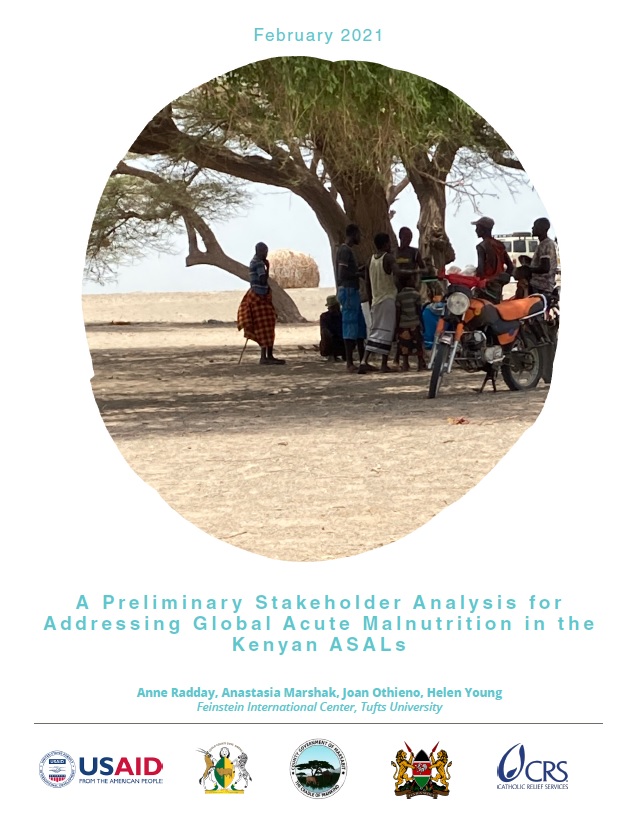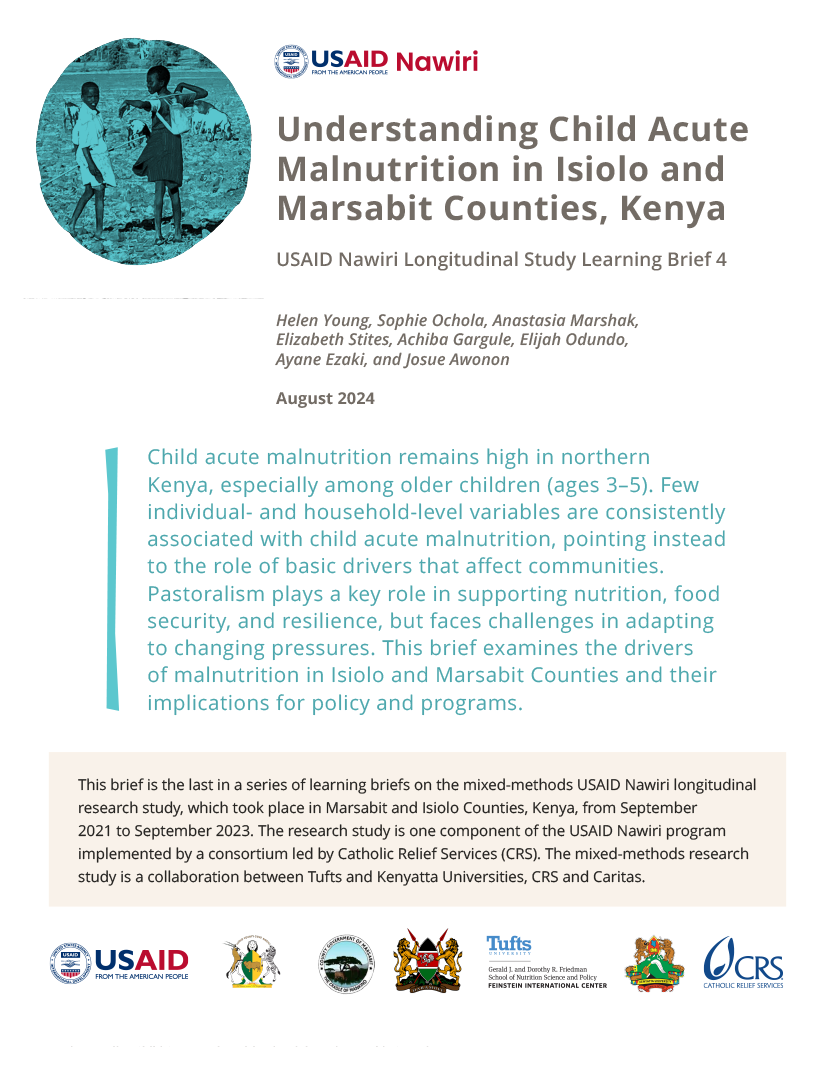Global acute malnutrition (GAM) is a persistent problem in the Kenyan arid and semi-arid lands (ASALs), despite the efforts of humanitarian programs and other initiatives. The Nawiri project emphasizes the importance of meaningful stakeholder engagement with people at national, county, and community levels. As part of the learning agenda and stakeholder engagement efforts, the Nawiri consortia conducted a preliminary stakeholder survey that sought to:
- Identify the type of involvement or influence different stakeholders have on GAM.
- Understand stakeholder knowledge of GAM and its root causes.
- Understand stakeholder perceptions of the effectiveness of strategies for addressing GAM.
- Promote wider awareness of and support for Nawiri.
This report describes findings and next steps for Nawiri, which may also be relevant to similar projects. These next steps include:
- While many respondents recognized that GAM is a persistent problem in the ASALs, some indicated that they believe GAM is mainly an issue in emergencies. Nawiri could increase the recognition of GAM as a persistent problem by, for instance, sharing data about GAM rates and how they are changing, and sharing the results of the Malnutrition Hotspot Analysis and Mapping report. This would help ensure all stakeholders have the same understanding of the problem that the project is addressing.
- Many respondents showed an understanding that malnutrition is complex with multiple drivers at many levels. Nawiri can further develop and solidify this understanding by sharing and explaining the Nawiri framework for addressing acute malnutrition with stakeholders.
- Most respondents understand and recognize the importance of the basic drivers of malnutrition despite having limited experience addressing them and INGOs rarely programming for them. Nawiri can continue to discuss these basic drivers to gain more information about how they have been addressed.
- Seasonality was not mentioned by respondents but is important in the ASALs. Nawiri has the opportunity to address this knowledge gap by monitoring seasonal trends to better understand the ways that seasons impact malnutrition in the ASALs and by working with stakeholders to help them better understand the seasonal dimension of malnutrition. While Nawiri gathers the data specific to the target counties, the project could use research from other areas to help stakeholders understand generally that seasonality matters before getting into specific trends in the ASALs.
- While respondents understand the importance of the basic drivers of malnutrition, the survey showed that the “food-first bias” is strong. Nawiri should make efforts when engaging stakeholders to better understand this bias so we can dispel the myth that addressing food intake alone will lead to reductions in malnutrition. Additional next steps include developing a targeted stakeholder analysis of local civil society; and relevant customary and traditional institutions at the county level and in the Nawiri study areas.
This study is part of the Nawiri (Nutrition in the ASALs within Integrated Resilient Institution) program. Nawiri aims to sustainably reduce persistent acute malnutrition by designing and implementing an approach for supporting, strengthening, and protecting systems and institutions. The project is funded by USAID/Bureau of Humanitarian Assistance (BHA) and the consortium implementing the program in Isiolo and Marsabit counties in northern Kenya is led by Catholic Relief Services (CRS).







